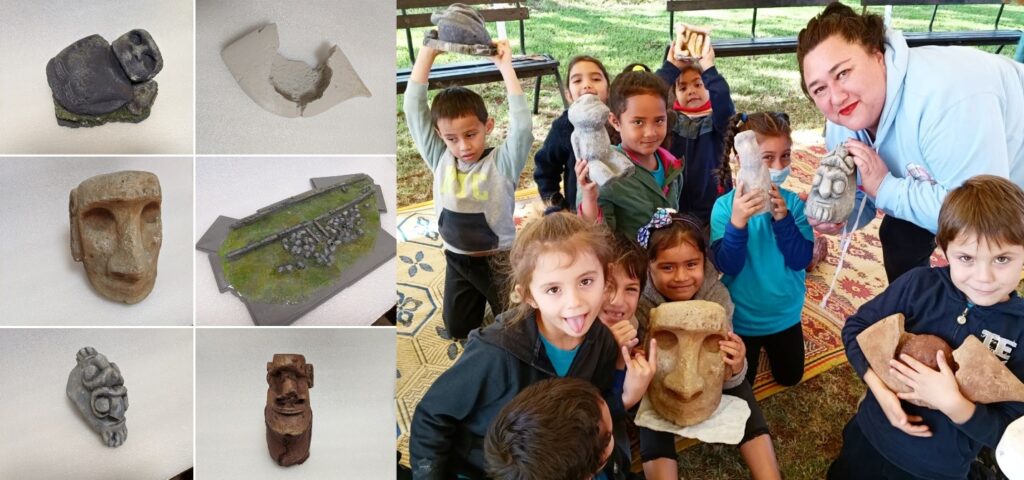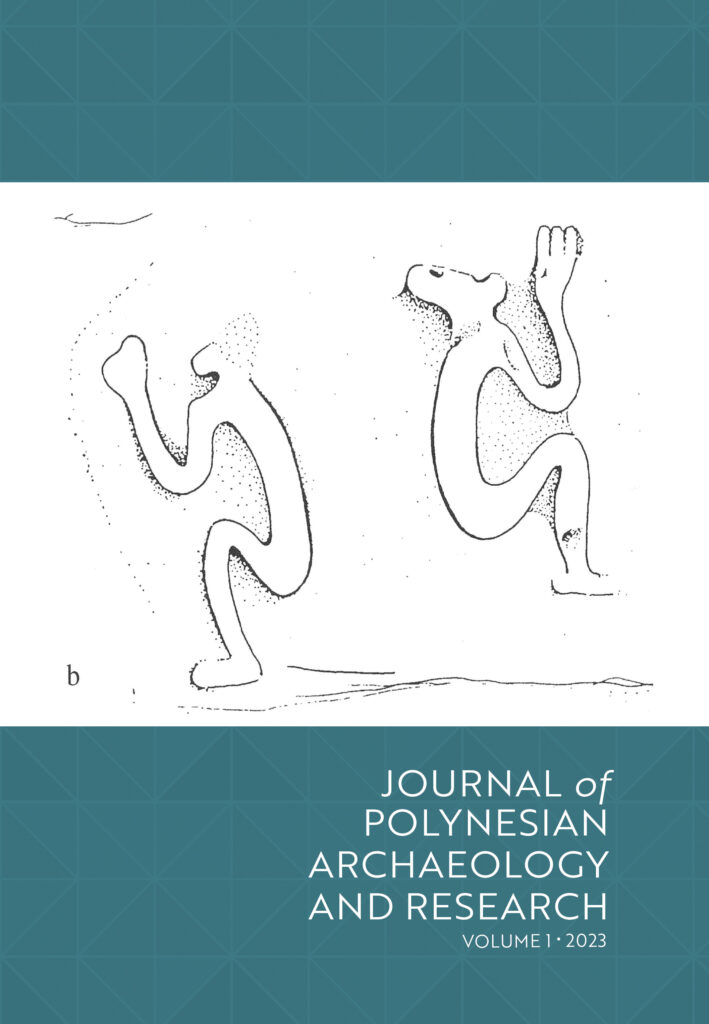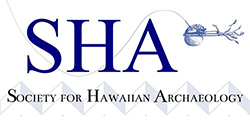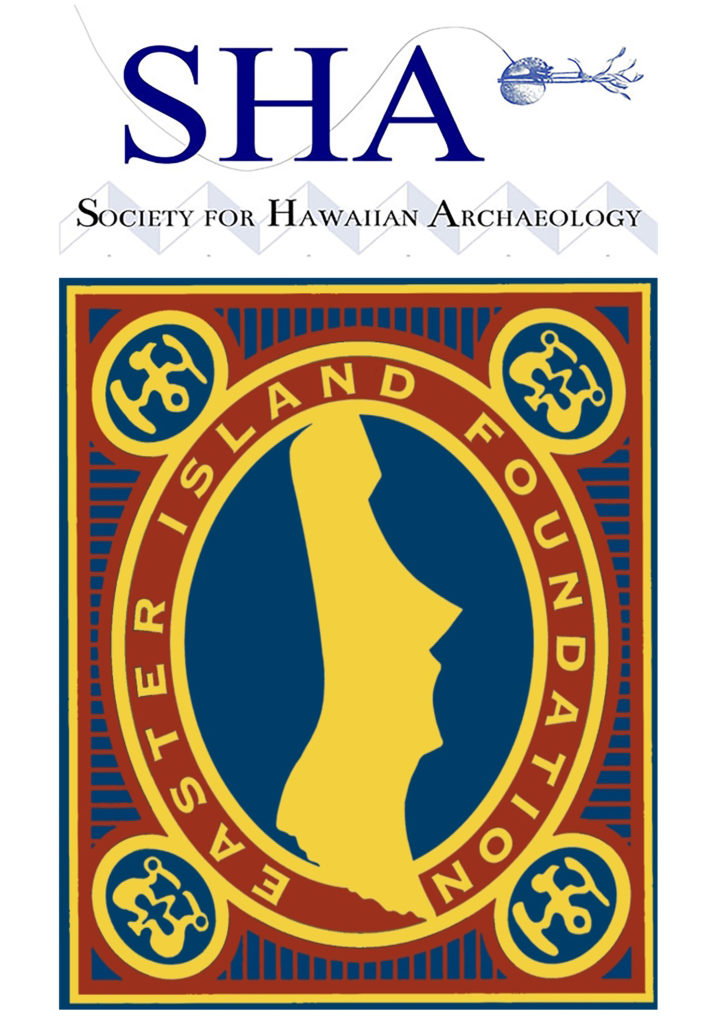The Journal of Polynesian Archaeology and Research, a joint venture between the Society for Hawaiian Archaeology (SHA) and the Easter Island Foundation (EIF), has published its inaugural issue freely available to all readers.
For three decades, both societies have been committed to promoting research and dialogue on the archaeology of Polynesia. While distribution of previous publications was limited to members, this journal is now open access.
Co-editors Dr. Mara Mulrooney (board member of the EIF and current president of SHA) and Dr. Jillian Swift (board member and publications chair of SHA) developed this journal as a forum to bring together important research and conversations around archaeology, history, and heritage management in Polynesia.

From the Editors Mara Mulrooney and Jillian Swift:
Welcome to the inaugural issue of the Journal of Polynesian Archaeology and Research (JPAR). We have been working with colleagues at the University of Hawai‘i Press for the past two years to establish and launch this open-access journal that focuses on the region of Polynesia with a particular emphasis on publishing the results of research by archaeologists, anthropologists, historians, and other researchers working in the region. For more than three decades, both the Society for Hawaiian Archaeology (SHA) and the
Easter Island Foundation (EIF) have been committed to promoting research and dialogue on the archaeology of Polynesia. Over the past 30 years, more than 33 volumes of the Rapa Nui Journal were published by the EIF and its founding editor Georgia Lee, and 15 volumes of Hawaiian Archaeology and four special publications were published by SHA (all volumes of both journals are now freely available on the University of Hawai‘i’s eVols digital archive, available at evols.library.manoa.hawaii.edu). It is with mixed emotions that we say farewell to these two long-standing forums and embark on a new journey in partnership with SHA, EIF, and UH Press. While JPAR replaces these recently retired journals, it carries on the legacies of these significant regional publications. It is hoped that JPAR will serve as a forum to bring together important research and conversations around archaeology, history, and heritage management in Polynesia that are of significant relevance to both organizations. We are especially grateful for the continued support of our members, support from whom allows us to produce an entirely open-access journal at no cost to authors.

Table of Contents
Editorial:
From the Editors
Mara Mulrooney and Jillian Swift
Articles:
Archaeological Approaches for Understanding the Marquesan Stone Pounder ke’a tuki popoi
Michelle J. Richards
Report on Midden Exposed by Coastal Erosion in Lapakahi State Historical Park, North Kohala District, Hawai‘i Island
Mark D. McCoy, Tracy Tam-Sing, Martha Yent, and K. Ann Horsburgh
EDXRF Analysis of Lithics from Lapakahi State Historical Park, Kohala District, Hawai‘i Island
Danielle Ciccone, Adam Johnson, Steven Lundblad, and Peter Mills
Reports and Commentaries:
Bottling Paradise: The Future of Glass Bottle Archaeology in Hawai‘i
Anthony K. Alvarez, Max Pinsonneault, and Daina Nicole Avila
Terevaka Archaeological Outreach (TAO) 2022–2023 Field Report: Program Expansion
Britton L. Shepardson, Alvaro Alexiz Espinoza Alvarez, Lexy Apaza Quispe, Hanna Araki Hey, Otea Araki Villaseca, Carlos Arriagada, Mahorangi Atan Hotu, Daniel Atariki Gajardo Troncoso, Sharlim Azumi Ccanto Pumaccahua, Frank Deivid Baca Curillo, Mauricio Baca Cabeza, Yonathan Baigorria, Jamie Bellian, Renato Berospi Huaman-Baji, Kaitlyn Bolland, Manurangi Castillo Pont-Hill, Brooklyn Christofis, Silvana Cruces, Marama Rangi Hetu’u Del Carmen Tepano Tikare, Miguel Duran Riroroko, Analía Gaete, Yeraldy Gallardo, Luz Gonzalez Mancilla, Andrés Guzman, Natalie Hansen, Anastasia Vaihoa’ata Haoa Delgado, Nainoa Haoa Paoa, John Alexander Huaman Montoya, Meri Icka Otero, Patricio Lagos, Gabriela Maldonado, Morgan Mallek, Sindbad Manae Boulineau, Mikaela Marcavillaca Bujaico, Heinui Mardones Riroroko, Mark McCoy, Atariki Mejias, Omar Monares, Fernanda Mondaca Rodriguez, Alonso Montoya Marcavillaca, Shelby Morgan, Princesa Moulton Atán, Ssunmy Navarro Huanca, Nehe-Nehe Vaihoa’ata Pate Tepano, Toui Rangi Quiroz, Yannely Quispe Huanca, Piero Ramos Olivera, Elisa Reinante Gutiérrez, Isabella Vaikaranga Reyes Pakarati, Sofia Riquelme Gutiérrez, Sydney Rittershaus, Po-patiri Rivera Pakarati, Juan José Rodriguez Moreno, Yilian Romero, Gabriela Salas Barria, Rodrigo Sallo Quispe, Andrew Svabik, Anapuakatiki Tepano Gutiérrez, Baruc Ote Rangi Ta’ava Nui Tepano Tuki, Amely Tiznado Soto, David Torres, Moeto Vai Kikiri Roa Tuki Teao, Tau ao Tuki Hey He, Rocío Vallejos Bermedo, Angeles Vargas Alvarez, Tau a hiro Vera Rapu, Valentina Vicencio, Max Willetts, Hiti Rau Williams Morales Hey, Jose Fernando Yucra Delgado, and Yanella Zapata
Book Reviews:
Rongorongo: Inscribed Objects from Rapa Nui
Reviewed by Rafał Wieczorek
Working with and for Ancestors: Collaboration in the Care and Study of Ancestral Remains
Reviewed by Rona Michi Ikehara-Quebral







